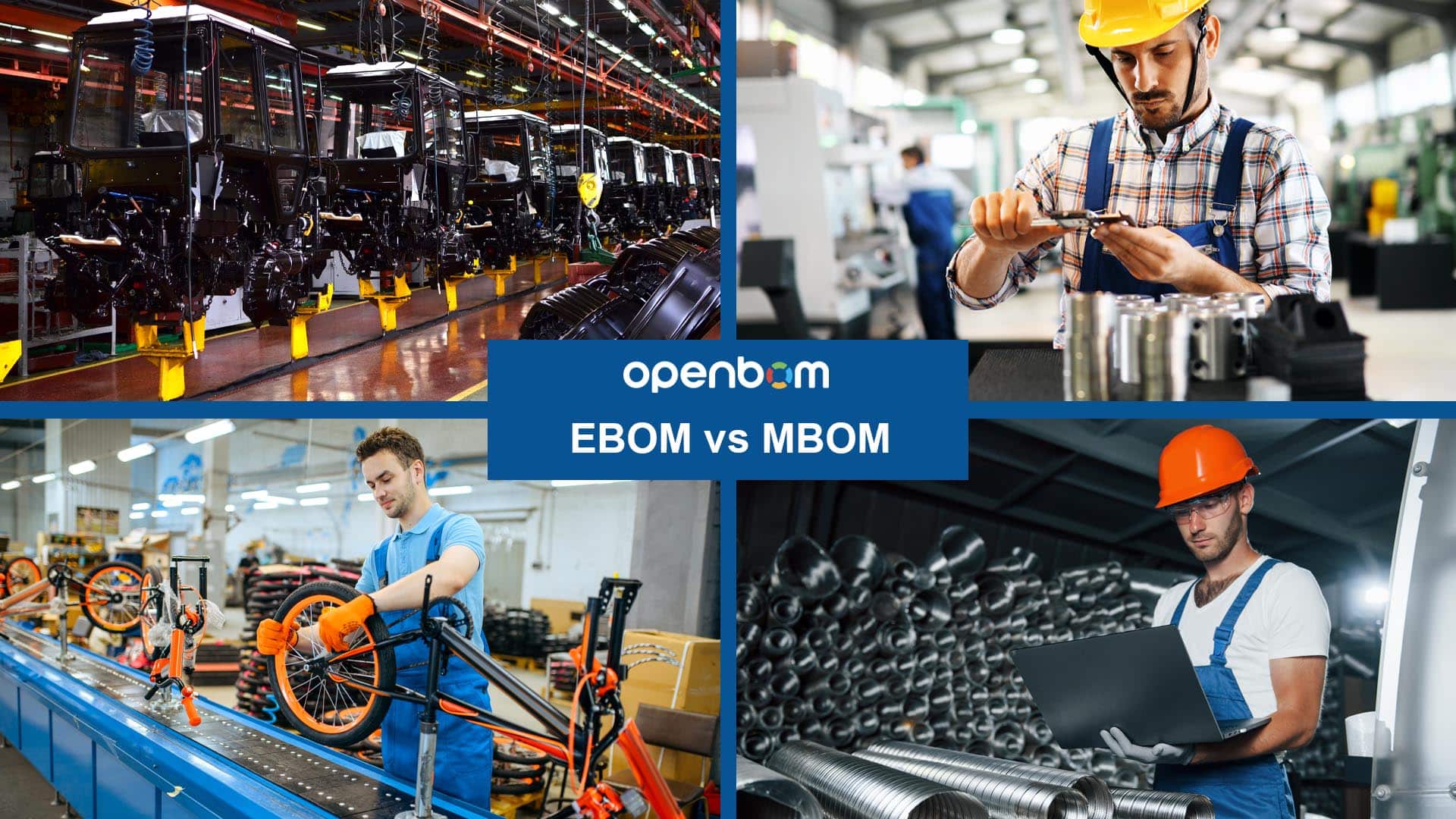
The product development and manufacturing world is full of terminology that sometimes can be very confusing – eBOM, mBOM, xBOM… Earlier last week, I provided a crash course of BOM types. I recommend you go and check it out before moving forward with this blog post.
In my view, Engineering and Manufacturing BOM is one of the most complex topics in the practical application of Product Lifecycle Management because it is part of the process that supports coordination between engineering, production planning, and assembly. These are the 3 most fundamental processes happening in all manufacturing companies regardless of their size, type of products, and business model.
More Sources You May Be Interested In
If you’re interested in reading more articles about PLM, EBOM, and MBOM, I recommend you head on over to some of my Beyond PLM articles about MBOM – The death of EBOM vs MBOM divide, Engineering Change and EBOM to MBOM, Is it a time for synchronized BOM.
Check them out – they can give you an idea of the complexity that is involved in these types of BOM’s and the divide you can find in many organizations about how to manage EBOM and MBOM.
If after checking out the blog posts above, you still find yourself in the complex place of not having the right answers on how to manage EBOM and MBOM, contact us -we are always happy to help.
In my article today, I’m going to focus on EBOM vs MBOM and give you some practical recommendations on how OpenBOM can help you.
Item and Catalogs
The fundamental part of OpenBOM is Item Definition which is done in the OpenBOM catalog. Catalogs help you to define item types and set the properties you would like to manage for each time.
It also gives you a way to set up the lifecycle state. For the moment, the state is a flexible property list where you can fill your values. This is the recommended procedure.
Watch the space around states and Item Revisions – this is work in development that we are currently working on (watch for changes in the near future). For more information about how to organize item’s data in OpenBOM, navigate here.
Bill of Materials
BOM in OpenBOM is a second fundamental part of product information and it describes the hierarchy of items (product structure). The structure is flexible and controlled by relationships with Part Numbers.
OpenBOM provides you with a flexible mechanism in User-Defined Views to control the structure and apply rules to filter with a specific set of options. This is where it starts to get very interesting – flexible data models (any property added to instance and items) combined with user-defined view filters will allow you to create any structure.
This is the foundation for a single BOM if you prefer it that way and it will allow you to keep both EBOM and MBOM separate as well if you decide on that option. Everything is flexible and dynamic.
If you prefer to keep EBOM and MBOM separate, OpenBOM gives you out of the box “Clone” command that allows you to clone a Bill of Materials and provides you a way to create a derivative of the BOM (Eg. MBOM from EBOM).
Read more about Bill of Materials and User-Defined Views.
Planning BOM and Orders
In addition to a flexible product structure mechanism, OpenBOM also provides you with a BOM mechanism (Order BOM).
This data structure is organized to automatically create a planning data set, which is created from a product structure to give information to procurement and production planning information about everything that needs to be ordered and assembled.
The information in the Order BOM includes purchased elements as well as assemblies (built and purchased), so you can use it for both work orders and purchase orders.
The information is fully in sync with the product structure (out of the box), so you can apply all changes from product structure to planning automatically. User-defined view as well as Purchase Order generation for vendors give you a flexible mechanism to slice and dice it for your organization’s needs.
To read more about planning and orders, check this article in our online training library – Production Planning and Inventory Control.
Conclusion
Engineering BOM and Manufacturing BOM are one of the most important and complex mechanisms you need to have to manage product information, changes, planning, procurement and ordering.
OpenBOM gives you a flexible mechanism to manage this data. Keep in mind that it requires some organizational planning and your company specifics must be analyzed before you make a decision on how to manage the data.
OpenBOM annual company subscription is an ideal starting point because it gives you a full set of features combined with OpenBOM live onboarding process which includes consulting meetings with our specialists.
Register for our FREE OpenBOM 14 Day Trial and see the difference that a digital network platform that manages product data and connects manufacturers can do for your business today!
If you ever have any questions feel free to reach out to support@openbom.com. We are here to help!
Best, Oleg
Join our newsletter to receive a weekly portion of news, articles, and tips about OpenBOM and our community.









